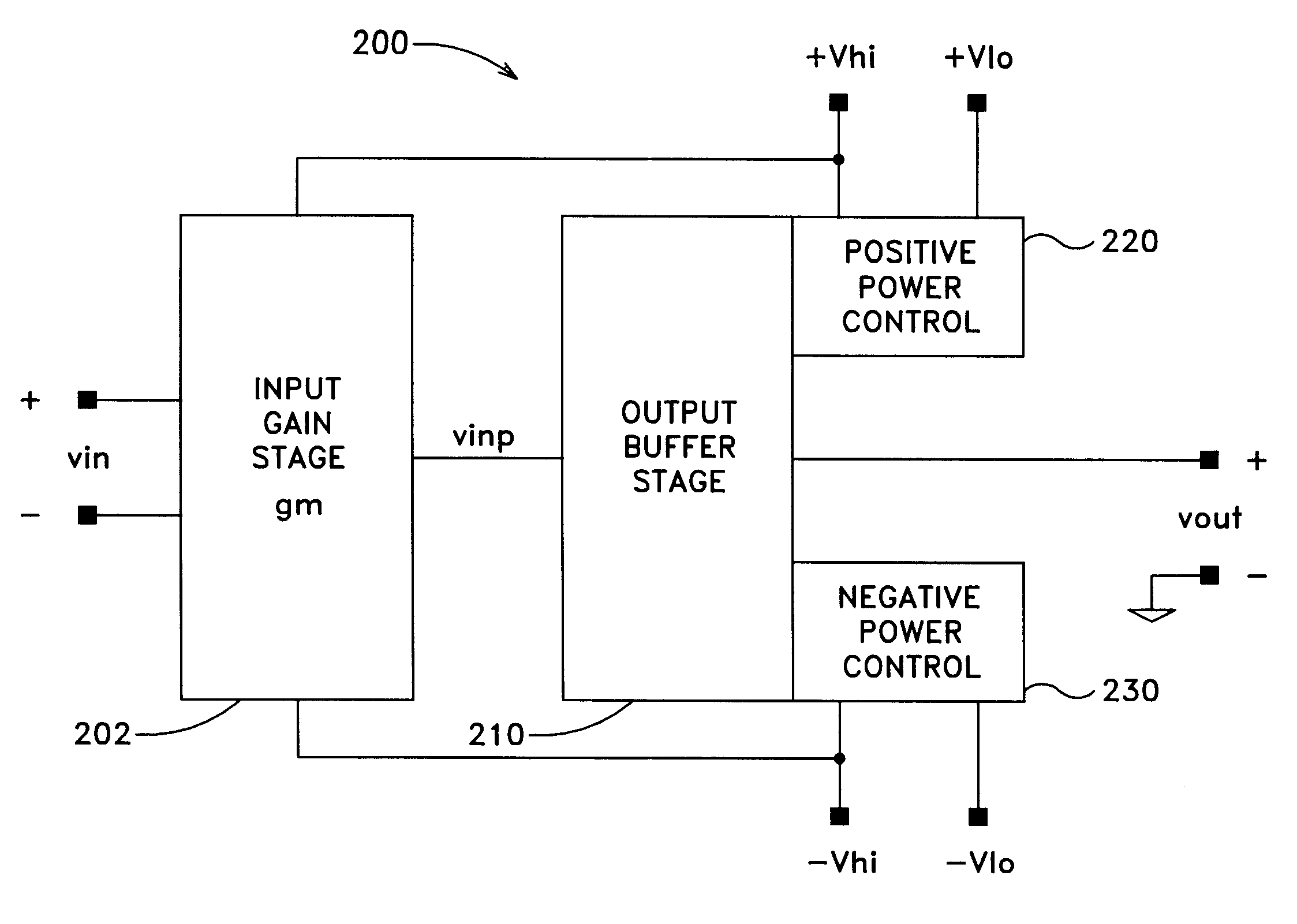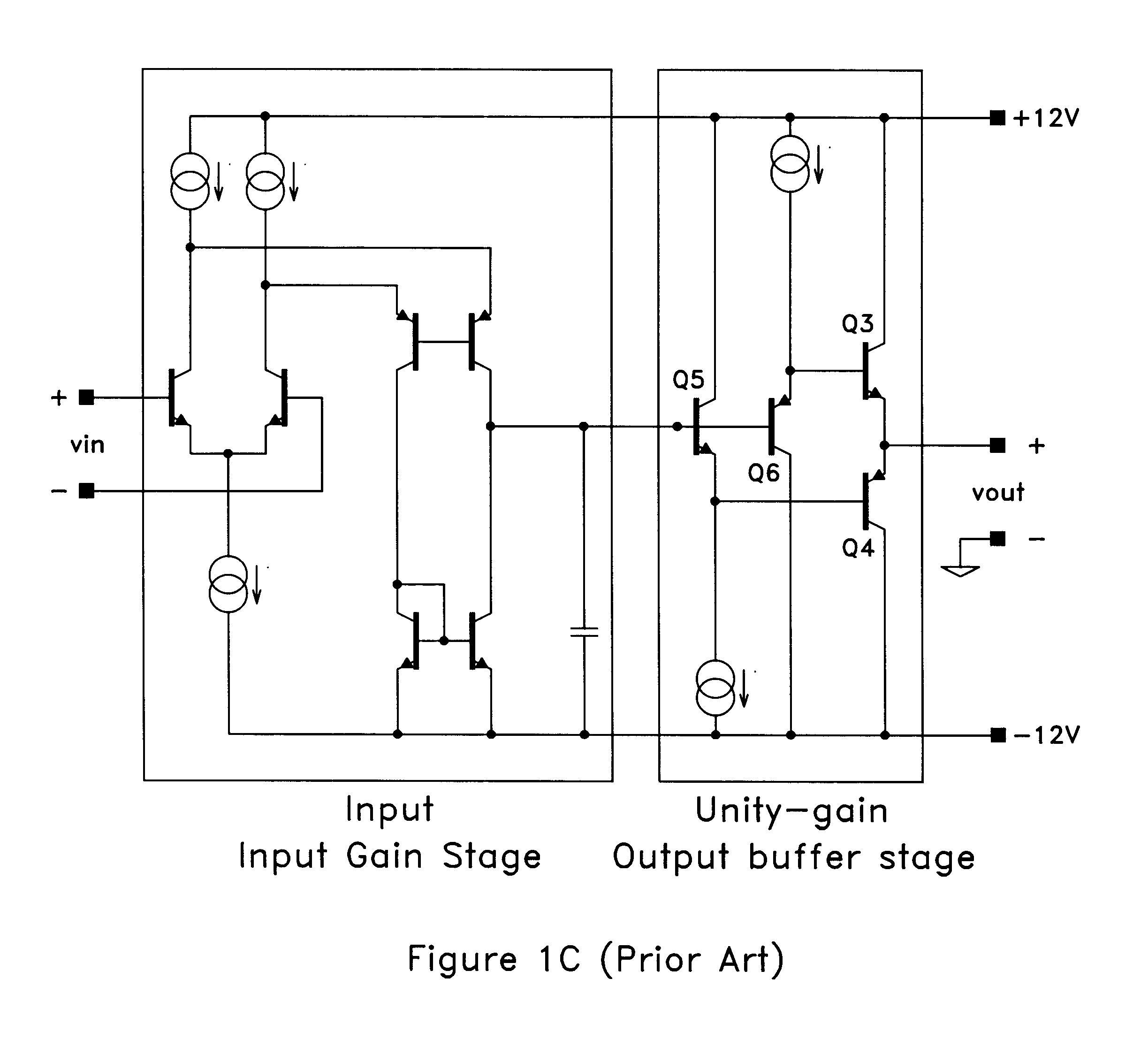High efficiency power amplifier
a power amplifier, high-efficiency technology, applied in the direction of electric variable regulation, process and machine control, instruments, etc., can solve the problems of high duty cycle, inapplicability of "class c" operation, and power need
- Summary
- Abstract
- Description
- Claims
- Application Information
AI Technical Summary
Benefits of technology
Problems solved by technology
Method used
Image
Examples
Embodiment Construction
FIG. 3 is a block diagram illustrating the preferred embodiment of the invention, with the buffer stage within the block 210, and the positive and negative power control circuits within blocks 220 and 230, respectively. In FIG. 3, conventional monolithic, bipolar NPN and PNP transistors are indicated with reference designations as Nk and Pk, respectively, (k=1, 2, . . . ). Conventional current sources and resistors are similarly indicated as ik and Rk, respectively, (k=1, 2, . . . ).
As is well known, the voltage drop (or rise) over a standard PN junction is roughly 600-800 mV, depending on operating parameters such as temperature (and thus on how much current is passing through the junction). All of the transistors used in the preferred embodiment of the invention are preferably fabricated on the same substrate, so that the voltage drop over any junction can be assumed to be nearly the same in magnitude as that over any other junction operating at approximately the same current dens...
PUM
 Login to View More
Login to View More Abstract
Description
Claims
Application Information
 Login to View More
Login to View More - R&D
- Intellectual Property
- Life Sciences
- Materials
- Tech Scout
- Unparalleled Data Quality
- Higher Quality Content
- 60% Fewer Hallucinations
Browse by: Latest US Patents, China's latest patents, Technical Efficacy Thesaurus, Application Domain, Technology Topic, Popular Technical Reports.
© 2025 PatSnap. All rights reserved.Legal|Privacy policy|Modern Slavery Act Transparency Statement|Sitemap|About US| Contact US: help@patsnap.com



